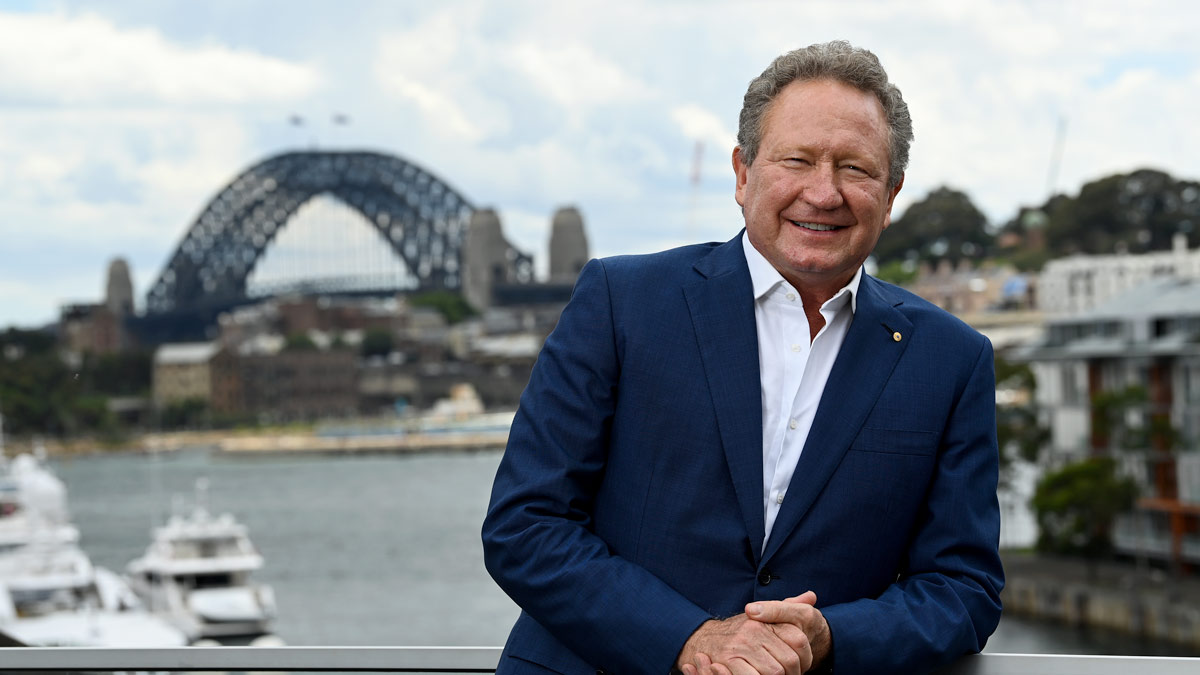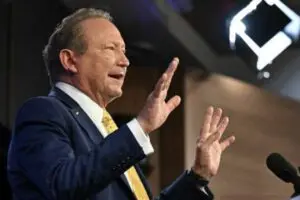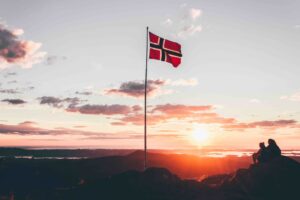Australia iron ore billionaire Andrew Forrest has struck a potential $50 billion green hydrogen agreement with German energy giant E.ON to produce up to five million tonnes of green hydrogen by 2030.
The landmark agreement could deliver one third of Forrest’s hugely ambitious plans to produce 15 million tonnes of green hydrogen by 2030, a target the head of his own green energy company Fortescue Future Industries Julie Shuttleworth thought was “very, very stretch”, but now says is quite achievable.
“We cannot keep gambling our energy security and the planet’s future on fossil fuels,” Shuttleworth said in a statement on Tuesday. “Green hydrogen is the practical, implementable solution to decarbonise and lower emissions.”
Forrest signed a Memorandum of Understanding (MoU) with E.ON and Germany government leaders in Berlin on Tuesday, and indicated it would include exports of renewable hydrogen from Australia.
The five million tonne green hydrogen target would likely require in the order of 60-70GW of wind and solar capacity. Forrest said it would represent an investment of around $50 billion, one of the largest ever energy investments of any kind.
Fortescue is seizing on the opportunities presented by the decision by Germany and other European countries to stop their dependence on Russian gas as quick as they can. This deal would account for one third of those imports. “Freedom energy”, Forrest described it at the press conference.
The two companies said any deal that emerges from the MoU would help lead the decarbonisation of Europe and to strengthen security of green energy supplies at a time when Europe needs to reduce its energy dependence on fossil fuels from Russia as quickly as possible.
The five million tonnes per annum (mtpa) of renewable hydrogen is equal to around one third of the Germany fossil fuel imports from Russia and will help decarbonise thousands of medium-sized enterprises in Germany, the Netherlands, and other European cities where E.ON distributes energy.
“Without green hydrogen we won’t have a planet,” Forrest told a news conference in Berlin. “This will make a huge dent in calorific energy that is being imported every day from Russia and replace that with pure, zero pollution green hydrogen.
“We have enough energy in Australia from a tiny, tiny fraction of our landmass to power all the world.” Forrest insisted the energy for the project would come from the wind and the sun in Australia and be shipped to Europe in the form of green ammonia and also in liquid hydrogen.
“We have enough wind and solar in Australia to completely overwhelm the fossil fuel sector in its entirety,” he said.
“It will be transported initially as green ammonia,” he said. “The Plan A is to build on the successful bulk shipment we have seen from Australian to Japan most recently.
“Liquid hydrogen will become the largest seaborne trade in the world. If it starts as green ammonia great, but I can assure you soon the bulk ships of green hydrogen will be sailing as liquid green hydrogen.”
In an earlier statement, Forrest said: “Green energy will reduce fossil fuel consumption dramatically in Germany and quickly help substitute Russian energy supply, while creating a massive new employment intensive industry in Australia.
“This is a cohesive and urgently needed part of the green industrial revolution underway here in Europe.”
The German minister for Economic Affairs and Climate Action, Robert Habeck, a Green member of the newly established coalition government, said the race for large scale production and transportation of green hydrogen has taken off.
“The agreement between E.ON and FFI is a major step forward and puts them in a pole position for the delivery of green hydrogen to German industry. I congratulate the two companies and I strongly welcome their contribution to a future without fossil fuels.”
The two companies said large amounts of renewable GH2 (green hydrogen) will be powered by Australia’s immense renewable resources as well as FFI’s other planned global projects, and will be distributed by E.ON.
The parties have also agreed to work together to analyse what solutions could look like to solve infrastructure issues and to build a secure value chain.
Fortescue has already announced a 5.4GW wind and solar project in the Pilbara, supported by large amounts of battery storage, but has said this is mostly to satisfy its own needs for its mining operations there and related activities.
Forrest also has private investments in massive projects such as the Sun Cable project in the Northern Territory, which will be the world’s biggest solar and battery project, and a raft of large wind, solar and battery projects in Queensland.
Forrest has also been talking to farmers around the Esperance area of Western Australia, where it is believed he is eyeing the opportunity of securing major land deals to host massive wind and solar arrays, in the same region that Intercontinental and CWP Global plan a mega 50GW project.
Fortescue and its subsidiary FFI have also signed a series of technology deals, partnerships and company investments that also include the start of construction of the world’s biggest electrolyser factory in Gladstone, Queensland.
““We are rapidly establishing the building blocks across Australia and globally that will allow us to develop and fully integrate our world leading green technologies, manufacturing capabilities and green energy generation and distribution,” Fortescue CEO Elizabeth Gaines said in the statement.
“Today’s important announcement in Europe is not just signaling to the global marketplace that now is the time to make renewable GH2. It is also a decisive step forward in FFI’s journey to become one of the world’s largest green energy producers.”
E.ON chief operating officer Leo Birnbaum said renewable hydrogen is key to the transition to green energy and was looking to build a “hydrogen bridge” from Australia to Germany and the Netherlands with FFI.
“We are foreseeing a rapidly increasing demand for renewable GH2, especially in our industrial “Mittelstand” client base in the regions we serve.
“Therefore, we look forward to unlocking the potential of this totally green, climate friendly energy source for our customers and are pleased to work towards building a secure value chain with a strong partner like FFI.
Tune into the recent Energy Insiders podcast featuring Fortescue Future Industries CEO Julie Shuttleworth.










